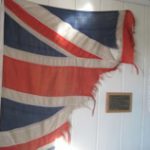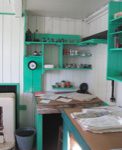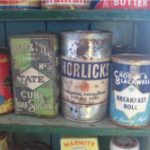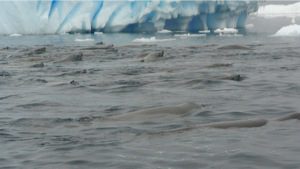
64d 49m 30.8s S, 63d 29m 43.1s W (WP162)
After our visit to Vernadsky, Argentine Islands (Wordie Hut), we were now essentially heading home, going north. Today we visited Port Lockroy, site of a former Whaling Station, and UK’s Base A (during WWII) as part of Operation Tabarin and later the Falkland Islands Dependencies Survey, now a visitor center and historic site. Base A had been closed in 1961-1962. Again, like Wordie Hut, the main buildings (Bransfield House) have been restored and preserved with their original contents in tact or substituted with like-era items (for example, their radio experimentation for ionospheric studies, the Beastie, is not the actual one that was in use at Port Lockroy, but one of the same model and make.).
It was a marvellous step back through time and a reminder of the roles humans have played and continue to play in this remote wilderness.
Samples from the inside of Port Lockroy, Base A
Jougla Pt, around the corner, we observed lots of Gentoo penguin chicks learning to swim, and observed at close range, nesting blue-eye shags. The beach was littered with a large collection of whale bones, large jaw bones, vertebrae and rib bones, all reminders of the whaling history of this region.
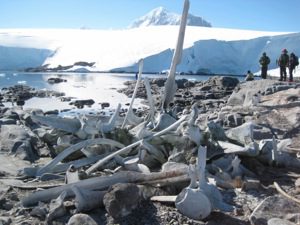
A Gentoo penguin perched among the bones of a fine whale, Jougla Pt.



